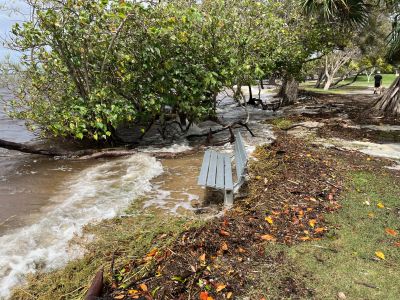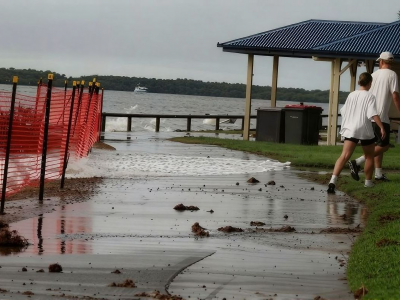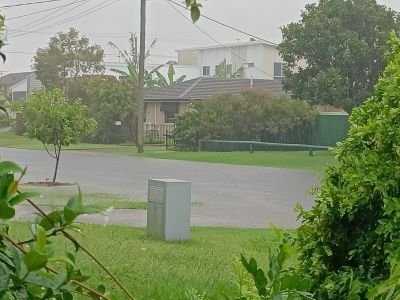Project overview
About the project
We’re taking the next step to protect the places we love by undertaking detailed precinct planning investigations to help protect Golden Beach and Caloundra (Bulcock Beach) from the growing impacts of a changing climate. These investigations explore long term options that aim to reduce the impacts of coastal and flooding hazards, while protecting the natural character, community values, and unique features that make these places so special, now and into the future. The area from Bulcock Beach to Bells Creek is covered in our investigations.
This project is an action of Council’s Coastal Hazard Adaptation Strategy and responds to increased risks following the Bribie Island breakthrough in 2022, and the subsequent breakthrough in 2025, which raised water levels in the Pumicestone Passage.
Why it matters
Many of our coastal communities are located in areas naturally exposed to hazards. Rising sea levels, stronger storms, heavier rainfall and erosion are already placing pressure on our coastline as shown in the images below:
This poses a threat to our public spaces, infrastructure and community safety. If nothing is done, our coastal public spaces will suffer. They will be damaged more and become less safe. Adaptation can reduce risks to our community and public infrastructure so we can continue to use these areas.
The need for these investigations has been intensified by the Bribie Island breakthrough in 2022 and 2025, which resulted in increased water levels in Pumicestone Passage. Our community is now experiencing the impacts of coastal hazards and inundation.
By planning today, we’re helping to ensure that our coastal communities remain safe, liveable and beautiful places for generations to come.
How we'll adapt
In late 2024, we asked the community to share how you use coastal spaces, what you value most, and how you think these areas should adapt to future hazards. From your feedback, we've identified four key community values for Golden Beach and Caloundra (Bulcock Beach):
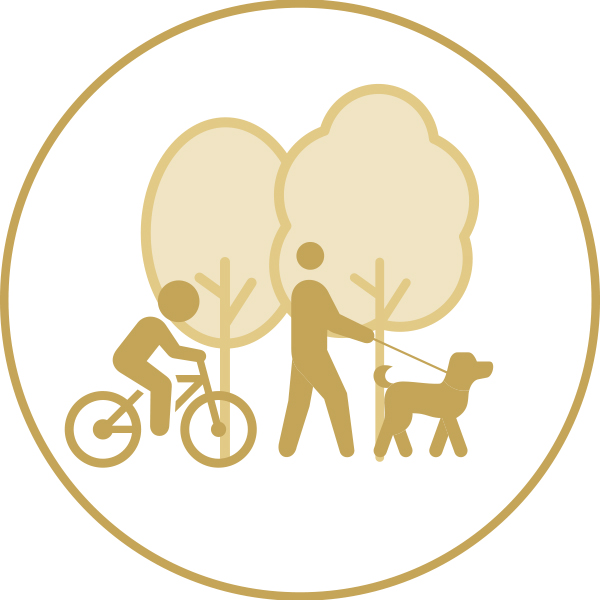


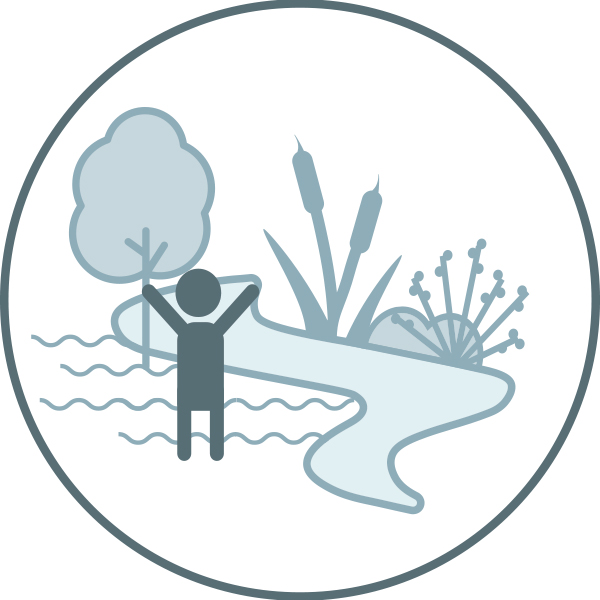
When we preserve the functionality of our coastal spaces, we also protect the things our community values most, such as access the nature, recreation and safe places to gather. We've also developed three core adaptation goals to protect our coastal areas by looking after the infrastructure, public spaces, and natural systems that support daily life:
Together, these elements aim to:
- protect public spaces and infrastructure
- maintain access to nature and recreation
- support safe, functional, and liveable coastal communities.
By preserving the function of these spaces, we protect our community values most. That’s why we’ve taken your input to guide the development of adaptation options for Golden Beach and Caloundra (Bulcock Beach). These adaptation options are built through the combination of the below elements:
These options allow us to keep our coastal areas safe, functional and enjoyable while upholding what our community values. Making practical, effective changes now will allow us to enjoy and use these areas into the future.
No single adaptation option will suit every coastal urban area. To maintain functionality and uphold community values, each area will have a tailored precinct plan combining a range of elements in the right places. Adaptation will happen gradually through affordable and staged improvements, delivered alongside Council's regular renewal projects. Adapting to a changing coast is a shared journey, and while Council leads the planning, everyone has a role to play. Working together will become even more crucial as we respond to the challenges posed by a changing climate.
Review the adaptation options and have your say to help us refine Coastal Hazard Adaptation Precinct Planning in Golden Beach and Caloundra (Bulcock Beach).
To find out more detailed information about this project, visit the document library or head to our corporate website.
Background
In 2021, we worked with the community to develop Our Resilient Coast. Our Future — the region’s Coastal Hazard Adaptation Strategy. This strategy outlines locality-specific coastal hazard risks, how and when they may affect our community, and identifies ways to adapt both now and into the future.
In response to the Coastal Hazard Adaptation Strategy, Council is planning for coastal hazards in several priority areas: Maroochydore, Mooloolaba, and Golden Beach and Caloundra (Bulcock Beach). These locations have been prioritised due to their existing exposure to coastal hazards, including inundation.
The first stage of these projects involved investigating potential adaptation options focused on protecting public spaces and infrastructure from the increasing impacts of climate change.
In October and November 2024, we invited the community to share how they use coastal spaces, what they value, and how these areas might be adapted to better withstand coastal hazards and flooding. This feedback has directly informed the development and analysis of the adaptation options. For more information about the first phase of engagement, review the engagement summary.
Project partners

The Golden Beach and Caloundra (Bulcock Beach) Coastal Hazard Precinct Planning investigation has received funding from the Australian Government’s Coastal and Estuarine Risk Mitigation Program.
Maroochydore and Mooloolaba still remain priority areas requiring further adaptation precinct planning. These investigations will be progressed at a later date. For more information, visit our corporate website.
Next steps
Council will review and evaluate all feedback received during this consultation process. Feedback will be used to progress and refine precinct planning for Golden Beach and Caloundra (Bulcock Beach). Further detailed analysis will be undertaken for each adaptation option. A summary of the outcomes of this consultation process will be provided to the community.
Timeline
-
Timeline item 1 - complete
28 October - 25 November 2024: Phase 1 community engagement
We asked the community to provide input on the way you use and value key coastal areas, and how Council might adapt them against coastal hazards.
-
Timeline item 2 - complete
March 2025: Phase 1 community engagement update
We provided the community with an update on the outcomes of the consultation process.
-
Timeline item 3 - complete
November 2024 - October 2025: Investigation and development of options analysis
Further investigations were completed and feedback from the community was considered in the development of adaptation options.
-
Timeline item 4 - active
17 November - 12 December 2025: Phase 2 community engagement
We are asking the community to provide feedback on the adaptation options we have developed for Golden Beach and Caloundra (Bulcock Beach).
-
Timeline item 5 - incomplete
Early 2026: Community engagement update
A summary of the outcomes of this consultation process will be provided to the community.
-
Timeline item 6 - incomplete
2026 onwards: Detailed analysis of adaptation options
Feedback from community engagement will be considered in the further detailed analysis of each adaptation option.
Want to know more?
Frequently asked questions
Coastal Hazard Adaptation Precinct Planning investigations will identify and assess potential adaptation options to reduce the impacts to our community caused by coastal hazards and flooding, now and into the future. Proactively planning for future adaptation is the best way to minimise the impacts that coastal hazards will have on the things we value about our coastal places.
Investigation areas are determined by Council's endorsed Coastal Hazard Adaptation Strategy (CHAS). The Coastal Hazard Adaptation Strategy assigned an adaptation response and pathway for each locality across the Sunshine Coast. Adaptation responses and options are considered by locality which is based on four zones and 28 associated beach units.
Erosion and inundation are natural processes that shape the coastline. However, they can become hazards when they impact on coastal values and how we use and enjoy the coast. Coastal hazard exposure is expected to increase with changes in wave action, storm activity and sea level rise associated with climate change. Coastal hazards include inundation of low-lying coastal areas and erosion of the shoreline. In Southeast Queensland, significant coastal hazard impacts are typically associated with East Coast Lows and tropical cyclones. To find out more about coastal hazards please see Fact Sheet 1 - Common coastal hazard adaptation and flooding terminology.
Investigations are currently underway in Golden Beach and Caloundra (Bulcock Beach), with preliminary investigations completed at Maroochydore and Mooloolaba. These areas are already experiencing the impacts of coastal hazards, including inundation. Familiarise yourself with the adaptation pathway outlined for your local beach or area by visiting the endorsed Coastal Hazard Adaptation Strategy.
Reducing coastal hazard and flood risks is complex due to the dynamic nature of the coastal environment and the way we use the coast. Adaptation options will need to be developed by considering the specific challenges and unique nature of each location and combining adaptation elements that create a bespoke adaptation option for each area. To find out more about adaptation elements please see Fact Sheet 2- Adaptation to manage impacts from coastal hazards.
While Council plays a key role in managing coastal hazards, the effective management of these hazards requires a collaborative approach. Working together will become even more important as we respond to the challenges posed by achanging climate. Proactive measures taken today will ensure that we are better equipped to face future challenges, minimise damage and ensure a more resilient Sunshine Coast for everyone. To find out more information about a collaborative approach to successful adaptation please see Fact Sheet 3 – Working together.
Council has defined three core goals for adaptation. These are:
- protecting our coastal spaces from erosion
- keeping our roads accessible during high tides
- ensuring effective drainage across the area.
These proactive measures help minimise future damage, maintain vital access and strengthen the resilience of our coastal communities. To find out more about adaptation goals please see Fact Sheet 4 - Adaptation Goals.
Each adaptation option will be measured against their ability to meet the core adaptation goals as well as five key criteria to determine their suitability. These are:
- viability, i.e. considers technical soundness, environmental impacts and sustainability, and upfront capital and ongoing maintenance costs
- feasibility, i.e. considers practicality and integration with existing networks and processes, availability of economic resources required for implementation, and legal and regulatory constraints affecting implementation
- functionality, i.e. considers dependability and consistency, how well the option improves resilience to coastal hazards, avoids/minimises adverse impacts, the ability to adapt to future conditions, and the ability to satisfy the three core goals defined for successful adaptation
- urban design, i.e. considers visual appeal and design quality and how the option complements the existing urban landscape, integration with existing infrastructure
- alignment with values and character of the area, i.e. considers alignment with community needs, preferences and social cohesion, preservation of cultural heritage, and economic benefit to the area.
Bribie Island is part of a National Park, and Pumicestone Passage lies within the Moreton Bay Marine Park, both managed by the Queensland Government.
The Queensland Government is responsible for managing and monitoring Bribie Island. Sunshine Coast Council offers support to the Queensland Government as needed.
Any requests about the management of Bribie Island should be directed to the State Government’s Department of Environment, Tourism, Science, and Innovation (DETSI).
The northern Pumicestone Passage is being closely monitored by the Department, Maritime Safety Queensland, within the Department of Transport and Main Roads, and by Sunshine Coast Council.
The breakthrough has altered the tidal range in Pumicestone Passage, exposing parts of the Golden Beach foreshore to increased coastal erosion and inundation.
Sunshine Coast Council is responsible for shoreline protection of Council managed land at Golden Beach. Our actions are guided by the Coastal Hazard Adaptation Strategy, Shoreline Erosion Management Plan, and the Bribie Island Breakthrough Action Plan.
Our actions focus on protecting the Golden Beach foreshore and the important community assets like roads, parks and playgrounds.
Fact Sheet 2outlines a long list of adaptation elements to mitigate against coastal hazards, including offshore structures. These offshore elements are not within Councils remit, and not within Councils ability to deliver. Any proposal arising from the Coastal Hazard Adaptation Planning process involving works offshore would be deferred to the State Government for their consideration, with their response informing the planning investigation.
The Queensland Government is leading the Bribie Island erosion and breakthrough review because they manage Bribie Island. Please refer to their website for more information.
Part 1: Desktop review.
Part 2: Immediate recommendations.
Part 3: Long-term recommendations have been published and can be viewed here: Bribie Island erosion and breakthrough review | State Development, Infrastructure and Planning.
View Sunshine Coast Council’s first submission to the Bribie Island erosion and breakthrough review.
Other ways we are continuing to support the review:
- being part of the technical review process providing background information
- providing findings of the Golden Beach Coastal Hazard Adaptation Precint Planning Project to the review including feedback provided by the community about the values of the area
- contributing vital local knowledge and being on hand to offer more support if it’s needed.
Emergency package for Bribie Island dredging works - The Queensland Government is implementing a package of emergency works, including infilling the 2025 breakthrough in the island. This is being managed by the Office of the Coordinator General.
Further information can be found here: Emergency package for Bribie dredging works fast-tracked - Ministerial Media Statements.
Golden Beach is currently exposed to hazards including tidal inundation, coastal erosion, storm tide inundation, wave action, stormwater flooding and river and creek flooding - these hazards will continue to increase in the future, as we respond to a changing climate. Not all of these hazards can be mitigated against by the restoration of Bribie Island. We need to ensure our coastal areas remain liveable, safe and functional places for our community. To achieve this, we need to protect these areas through effective adaptation, ensuring a good balance between functional outcomes and preservation of community values.
The seawall design reflects Coastal Hazard Adaptation Precinct Planning principles and incorporates adaptation options to ensure long-term resilience, while preserving the function and character of this coastal area. This includes a shoreline system to protect Diamond Head from erosion, and stormwater provisions, ensuring effective drainage across the area.
Ensuring this public space is protected from erosion and well drained helps to safeguard a vital community asset, ensuring these areas remain safe, functional and enjoyable into the future.
Head to the Diamond Head Seawall and Foreshore Improvements Have your Say page to find out more about how these projects are linked and have your say.
Council has prepared new guidance on the design of resilient homes which can be found on the Sunshine Coast Council Flood Resilience Guidelines webpage.
It is expected that new development will play an important part of coastal hazard adaptation, as shown on the working together fact sheet. Developers will rely on the Sunshine Coast Planning Scheme to inform them of the special outcomes for coastal hazard adaptation. Coastal Hazard Adaptation Precinct Plans will inform detail in the planning scheme relating to coastal hazard adaptation. This detail will sit in planning scheme policies and local plans.
Feedback obtained from community in this round of engagement will be reviewed and considered in the refinement of adaption options and further development of the precinct plan.
-
 Golden Beach and Caloundra (Bulcock Beach) CHAPP Community Engagement Summary - Phase 1PDF (762.68 KB)
Golden Beach and Caloundra (Bulcock Beach) CHAPP Community Engagement Summary - Phase 1PDF (762.68 KB) -
 Golden Beach and Caloundra (Bulcock Beach) - Information SheetPDF (4.16 MB)
Golden Beach and Caloundra (Bulcock Beach) - Information SheetPDF (4.16 MB) -
 Fact Sheet 1 - Common coastal hazard adaptation and flooding terminologyPDF (745.72 KB)
Fact Sheet 1 - Common coastal hazard adaptation and flooding terminologyPDF (745.72 KB) -
 Fact Sheet 2 - Adaptation to manage impacts from coastal hazardsPDF (885.63 KB)
Fact Sheet 2 - Adaptation to manage impacts from coastal hazardsPDF (885.63 KB) -
 Fact Sheet 3 - Working togetherPDF (1.86 MB)
Fact Sheet 3 - Working togetherPDF (1.86 MB) -
 Fact Sheet 4 - Core adaptation goalsPDF (1.46 MB)
Fact Sheet 4 - Core adaptation goalsPDF (1.46 MB)
Contact us
If you have questions or want to learn more about the project, contact us below:
| Name | Coastal Hazard Adaptation Precinct Planning Team |
|---|---|
| Phone | (07) 5475 7272 |
| ourresilientcoast@sunshinecoast.qld.gov.au |
Adaptation options
The year 2100 with adaptation options
The image below shows how the foreshore might look in 2100, where a combination of different adaptation options such as road raising, raising open spaces, protective seawalls, and beach nourishment have been put in place to keep Golden Beach and Caloundra (Bulcock Beach) safe, functional, and enjoyable.
Click the arrows on the icons to find out about each adaptation option.

The year 2100 - with and without adaptation options
The images below outline two different scenarios:
- 2100 without adaptation actions: this scenario shows what the foreshore might look like in the year 2100 if no adaptation happens. It highlights potential changes at different locations along Golden Beach and Caloundra (Bulcock Beach). Community values are unable to be retained in this scenario.
- 2100 with adaptation actions: this scenario shows how the foreshore might look in 2100, where adaptation measures have been put in place. It highlights the adaptation elements that form the different adaptation options at various locations along Golden Beach and Caloundra (Bulcock Beach). Community values are able to be retained in this scenario.
Click the arrows on the slider and move back and forth to explore both scenarios.
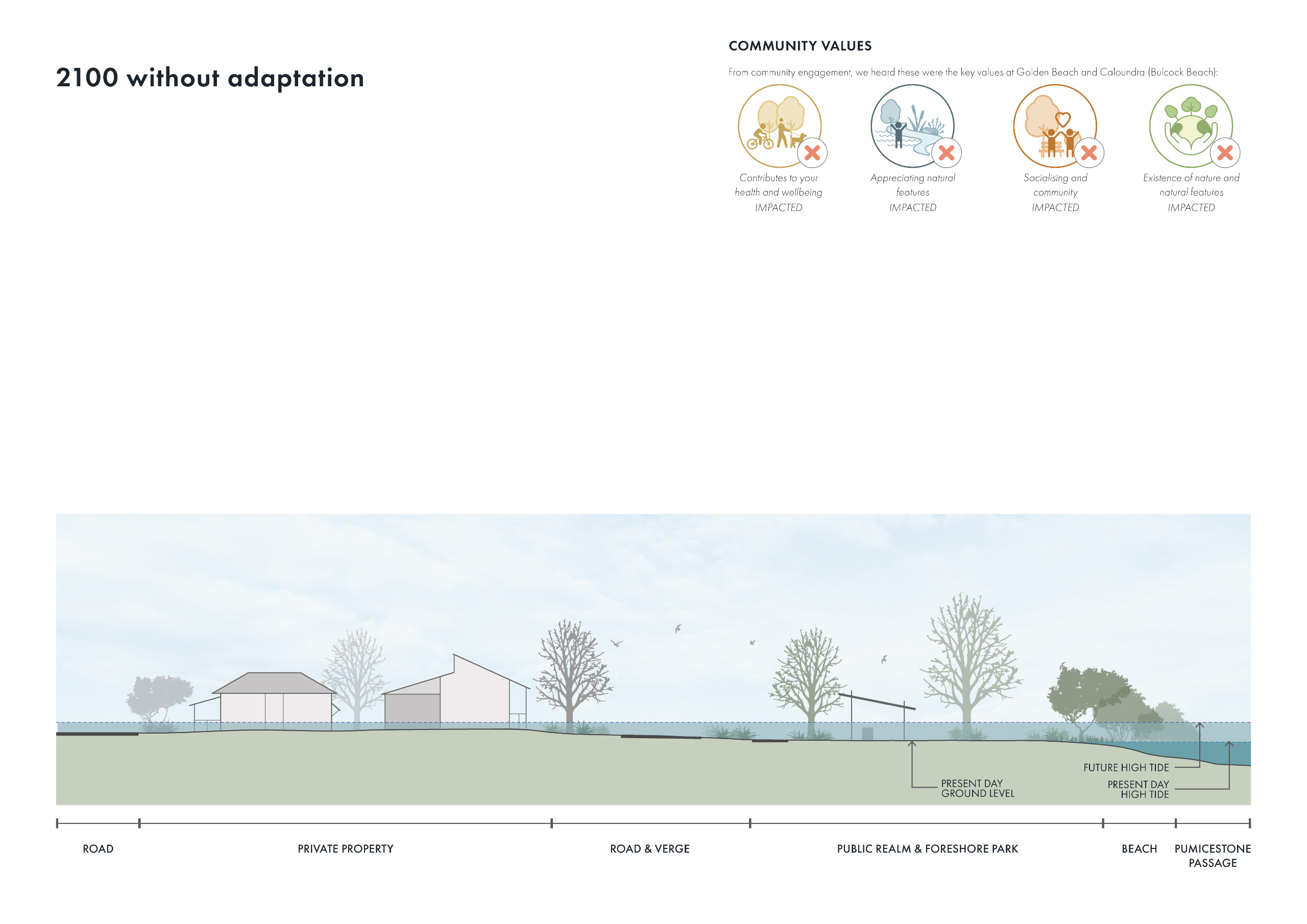

Have your say
What we're asking now
You’re invited to have your say on the long-term options that explore how we can adapt to our changing coastline. Feedback will be used to further refine adaptation planning for the Golden Beach and Caloundra (Bulcock Beach) precinct area.
Consultation is open from Monday 17 November to Friday 12 December 2025 at 5pm.
Ways to get involved
Attend a pop-up event
Wednesday 19 November 2025
Caloundra Library, Old Council Chambers (Level 2), 1 Omrah Ave, Caloundra
4pm - 7:30pm
Saturday 29 November 2025
Diamond Head foreshore, Military Jetty, Golden Beach
8am -12pm
Saturday 6 December 2025
Fraser Park, Esplanade, Golden Beach
7am - 11am
Wednesday 10 December 2025
Caloundra Library, Old Council Chambers (Level 2), 1 Omrah Ave, Caloundra
5.30pm – 7.30pm

